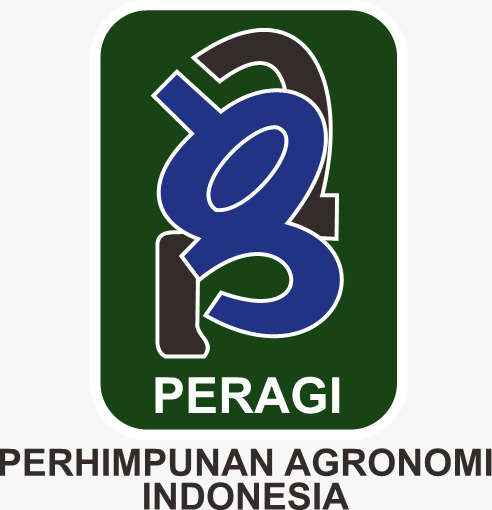Dominance of Understory Vegetation and Biomass Production of Oil Palm Plantations on Mineral Land
Abstract
The understory vegetation of oil palm plantations varies across different types of land. The biomass of this vegetation plays a crucial role in maintaining the ecological balance of oil palm plantation ecosystems. This study aims to identify the types of understory vegetation and calculate biomass production on the mineral land of PT. Rigunas Agri Utama's oil palm plantations. The research was conducted in August 2024 using direct observation methods. Observations of understory vegetation were carried out on 45 sample plots utilizing the quadrat method and the Plantnet application, with biomass measurements taken using the destructive sampling method. The results indicated the presence of 27 understory vegetation species with varying compositions. The most dominant species was Mitracarpus hirtus (L.) DC. The highest density, frequency, and dominance values were exhibited, with a species dominance ratio (SDR) of 35%. Understory vegetation primarily comprises broadleaf species and grasses, with a significant proportion being perennial plants that enhance ecosystem stability. The total biomass production of understory vegetation reached 5,943 kg over 12 hectares, resulting in carbon stocks of 2,793 kg C per 12 hectares. The species contributing the most to biomass include Mitracarpus hirtus, Cyperus rotundus, and Eleusine indica. The findings of this study indicate that the total carbon stock of understory vegetation in oil palm plantations is approximately 232.7 kg C per hectare. In comparison, carbon stocks in understory vegetation within agricultural ecosystems, such as oil palm plantations, typically range from 0.18 to 1.00 tons C per hectare (180 to 1,000 kg C per hectare), suggesting a strong potential for carbon storage in the oil palm plantations of PT. Rigunas Agri Utama.
Downloads
References
Abdullah, H. U., Endiyani, Agustina, S., Irhami, & Akbar, Y. (2023). Correlation between soil carbon potential and soil quality index in various types of dry land use in Aceh Besar District. Jurnal Agronomi Tanaman Tropika (JUATIKA), 5(1), 8–19. https://doi.org/10.36378/juatika.v5i1.2747
Anggraini, S. (2021). Monograf cadangan karbon kelapa sawit untuk lahan berpirit. Unpri Press.
Anggraini, S., & Afriyanti, N. (2019). Estimasi cadangan karbon kelapa sawit bibit bersertifikat pada perkebunan kelapa sawit Kabupaten Serdang Bedagai, Sumatra Utara. Agroprimatech, 3(1), 11–16.
Ariyanti, M., Rosniawaty, S., & Utami, H. A. (2018). Pertumbuhan bibit kelapa sawit (Elaeis guineensis Jacq.) dengan pemberian kompos blotong disertai dengan frekuensi penyiraman yang berbeda di pembibitan utama. Kultivasi, 17(3), 723–731. https://doi.org/10.24198/kultivasi.v17i3.18890
Badan Standarisasi Nasional. (2019). Pengukuran dan perhitungan cadangan karbon: Pengukuran lapangan untuk penaksiran cadangan karbon berbasis lahan (land-based carbon accounting) (SNI 7724:2019). https://jogja.bsilhk.menlhk.go.id/?page_id=1439#flipbook-df_1436/15/
Barus, T., Astuti, Y. T. M., & Hartati, R. M. (2022). Produktivitas biomassa vegetasi bawah pada TM awal dan TM lanjut di perkebunan kelapa sawit. Jurnal Online Mahasiswa. https://repository.instiperjogja.ac.id/index.php?p=show_detail&id=18382&keywords=produktivitas+biomassa
Gunawan, H., Manurung, S., & Ichsan, M. (2025). Analysis of weed vegetation in oil palm plants (Elaeis guineensis Jacq.) in Bekiun Plantation at PT. Langkat Nusantara Kepong. 7(1), 226–232.
Kusmana, C. (2018). Metode survei dan interpretasi data vegetasi. PT Penerbit IPB Press.
Kusmana, C., Istomo, Winata, B., & Hilwan, I. (2022). Ekologi hutan Indonesia. PT Penerbit IPB Press.
Mudhita, I., & Badrun, B. (2019). Potensi hijauan di areal perkebunan kelapa sawit perusahaan, kelompok tani dan perkebunan rakyat sebagai tanaman pakan sapi potong di Kabupaten Kotawaringin Barat, Kalimantan Tengah. Journal of Tropical Animal Science and Technology, 1(1), 22–31.
Mulianto, A., Hartati, R. M., & Suryanti, S. (2022). Kajian komposisi dan produksi biomassa bawah kelapa sawit pada umur yang berbeda pada jenis tanah pasiran di PT. Borneo Ketapang Indah, Kalimantan Tengah. Jurnal Online Mahasiswa. https://repository.instiperjogja.ac.id/index.php?p=show_detail&id=18250&keywords=biomassa
Penman, J., Gytarsky, M., Hiraishi, T., Krug, T., Kruger, D., Pipatti, R., Buendia, L., Miwa, K., Ngara, T., Tanabe, K., & Wagner, F. (2003). IPCC: Good practice guidance for land use, land-use change and forestry. Institute for Global Environmental Strategies for the IPCC.
Sugirahayu, L., & Rusdiana, O. (2011). Perbandingan simpanan karbon pada beberapa penutupan lahan di Kabupaten Paser, Kalimantan Timur berdasarkan sifat fisik dan sifat kimia tanahnya. Jurnal Silvikultur Tropika, 2(3), 149–155.
Sugiyono, S. (2018). Metode penelitian pendidikan: Pendekatan kualitatif, kuantitatif, dan R & D. Alfabeta.
Sutaryo, D. (2009). Penghitungan biomassa (sebuah pengantar untuk studi karbon dan perdagangan karbon). Wetlands International Indonesia Programme.
Yahya, S., Ariyanti, M., & Asbur, Y. (2022). Perspektif baru: Manajemen vegetasi bawah tegakan pada budidaya kelapa sawit berkelanjutan. Jurnal Agronomi Indonesia, 50(3), 343–356. https://doi.org/10.24831/jai.v50i3.44605
Copyright (c) 2025 Raka Bagus Adjie Pangestu, Sri Suryanti, Retni Mardu Hartati

This work is licensed under a Creative Commons Attribution 4.0 International License.
Authors who publish with Jurnal Agronomi Tanaman Tropika (JUATIKA) agree to the following terms:
Authors retain copyright and grant the Jurnal Agronomi Tanaman Tropika (JUATIKA) right of first publication with the work simultaneously licensed under a Creative Commons Attribution License (CC BY 4.0) that allows others to share (copy and redistribute the material in any medium or format) and adapt (remix, transform, and build upon the material for any purpose, even commercially) with an acknowledgment of the work's authorship and initial publication in Jurnal Agronomi Tanaman Tropika (JUATIKA).
Authors are able to enter into separate, additional contractual arrangements for the non-exclusive distribution of the journal's published version of the work (e.g., post it to an institutional repository or publish it in a book), with an acknowledgment of its initial publication in Jurnal Agronomi Tanaman Tropika (JUATIKA). Authors are permitted and encouraged to post their work online (e.g., in institutional repositories or on their website) prior to and during the submission process, as it can lead to productive exchanges, as well as earlier and greater citation of published work.







 More Information
More Information



